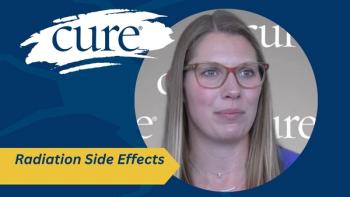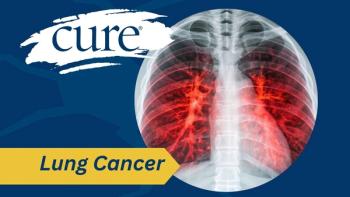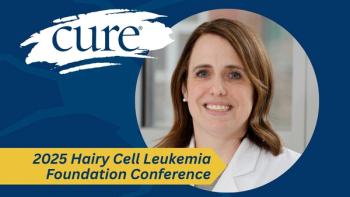
Study Finds a Decline in Late Effects After Childhood Treatment
There are fewer reported incidences of severe long-term side effects after childhood cancer treatment, according to a recent study.
Findings from an analysis of 23,600 survivors enrolled in the Childhood Cancer Survivor Study showed that the number of severe long-term side effects from childhood cancer treatment is dropping.
Due to advances in curative therapy, supportive care, screening, and early detection, the rate of serious late effects 15 years after diagnosis of a childhood cancer was lower in the 1980s than it was in the 1970s, and it dropped yet again in the 1990s.
The results, generated by researchers from a host of cancer hospitals across the United States, were presented June 2 at the 2017 ASCO Annual Meeting.
The Childhood Cancer Survivor Study uses periodic surveys to explore long-term health outcomes in survivors of childhood cancer who were diagnosed from 1970 to 1999 and survived at least 5 years after diagnosis. The latest survey found that 12.7 percent of patients diagnosed in the 1970s developed at least one severe, disabling, life-threatening or fatal late effect within five to 15 years after diagnosis. That percentage dropped to 10.1 percent for those diagnosed in the 1980s, and to 8.9 percent for people diagnosed in the 1990s. That represents a 16 percent improvement per decade.
Rather than being evenly distributed across cancer types, however, these gains were seen only in patients treated for certain cancers.
The authors embarked on the study because they knew that survival rates after childhood cancer had improved, and wanted to determine whether treatment advances had also contributed to a decline in the incidence of chronic disease in survivors.
In fact, the 5-year survival rate after a diagnosis of cancer at ages 0 to 14 has risen from 58 percent in the 1970s to 84 percent today, ASCO said in a press release. There were 420,000 survivors of childhood cancers in the United States in 2013, and that number is expected to exceed half a million by 2020, noted study lead study author Todd M. Gibson, Ph.D., an assistant member at St. Jude Children’s Research Hospital in Memphis, Tennessee.
ASCO said that a previous report from the Childhood Cancer Survivor Study indicated that changes in treatment over three decades had cut the chances that childhood cancer survivors would die from the late effects of therapy by 6.4 percent, or about half.
Still, more than half of five-year survivors of childhood cancers develop at least one serious or fatal late effect by the age of 50, the researchers reported.
“Our analysis marks the first comprehensive assessment of changes in the rates of chronic health complications over time in a large group of cancer survivors,” Gibson said. “From our findings, it is clear that survivors diagnosed and treated in more modern treatment eras are doing better. Not only are more children being cured, but they also have lower risk for developing serious health problems due to cancer treatment later in life.”
Median age of survivors in the study was 28, and they were a median 21 years from diagnosis. Researchers asked survivors to report their experiences in a survey, and searched the National Death Index for survivors who had died due to health conditions arising from childhood cancer treatment.
Researchers found that each cancer type was associated with its own specific outcome when it came to changes in the rate of late effects. Over the three decades included in the survey, and among patients at least 15 years past their diagnosis, the investigators found that the rate of serious late effects decreased from:
- 18 percent to 11 percent in survivors of Hodgkin lymphoma
- 15 percent to 9 percent in survivors of astrocytoma, the second most common childhood cancer
- 13 percent to 5 percent in survivors of Wilms’ tumor, a rare kidney cancer
- 10 percent to 6 percent in survivors of non-Hodgkin lymphoma
- 9 percent to 7 percent in survivors of acute lymphoblastic leukemia, the most common childhood cancer
Researchers credited the reductions to decreased treatment intensity. However, they did not find any decline in the rate of late effects for survivors of other childhood cancers, including neuroblastoma, acute myeloid leukemia, soft tissue sarcoma and osteosarcoma.
Across cancer types, the most improvement was found in the incidence of endocrine, or hormonal, conditions, which dropped from a rate of 4 percent to 1.6 percent, and the development of new cancers, which dropped from a rate of 2.4 percent to 1.6 percent. Besides those illnesses, the steepest drops were seen in the rates of gastrointestinal and neurological conditions.
The incidence of heart and lung problems, however, did not drop during the study period. The 2015 Childhood Cancer Survivor Study that found a reduction in deaths from late effects of childhood cancer treatment did detect small decreases in the frequency of fatalities due to cardiac and pulmonary issues. However, that study looked strictly at deaths due to late effects, not the overall incidence of the health conditions in the study population.
“We were a little surprised that the incidence of severe cardiovascular disease did not decrease, knowing that deaths from cardiovascular disease dropped among survivors in recent decades,” Gibson said. “This is a reminder that survivors continue to have an increased risk for serious health problems compared to the general population and need to be followed closely.”
Next steps for the researchers will involve closer study of specific health conditions in survivors of childhood cancers and longer-term follow-up that will shed light on the intersection of late effects with aging.
“Perhaps no other area of oncology has seen such dramatic progress in treatment over the past decades as childhood cancer,” said ASCO subject expert Timothy D. Gilligan, M.D., MSc, associate professor of medicine at the Cleveland Clinic Taussig Cancer Institute. “These results show how important it is to fund and conduct studies of cancer survivors.”
The analysis was funded by the National Institutes of Health.





